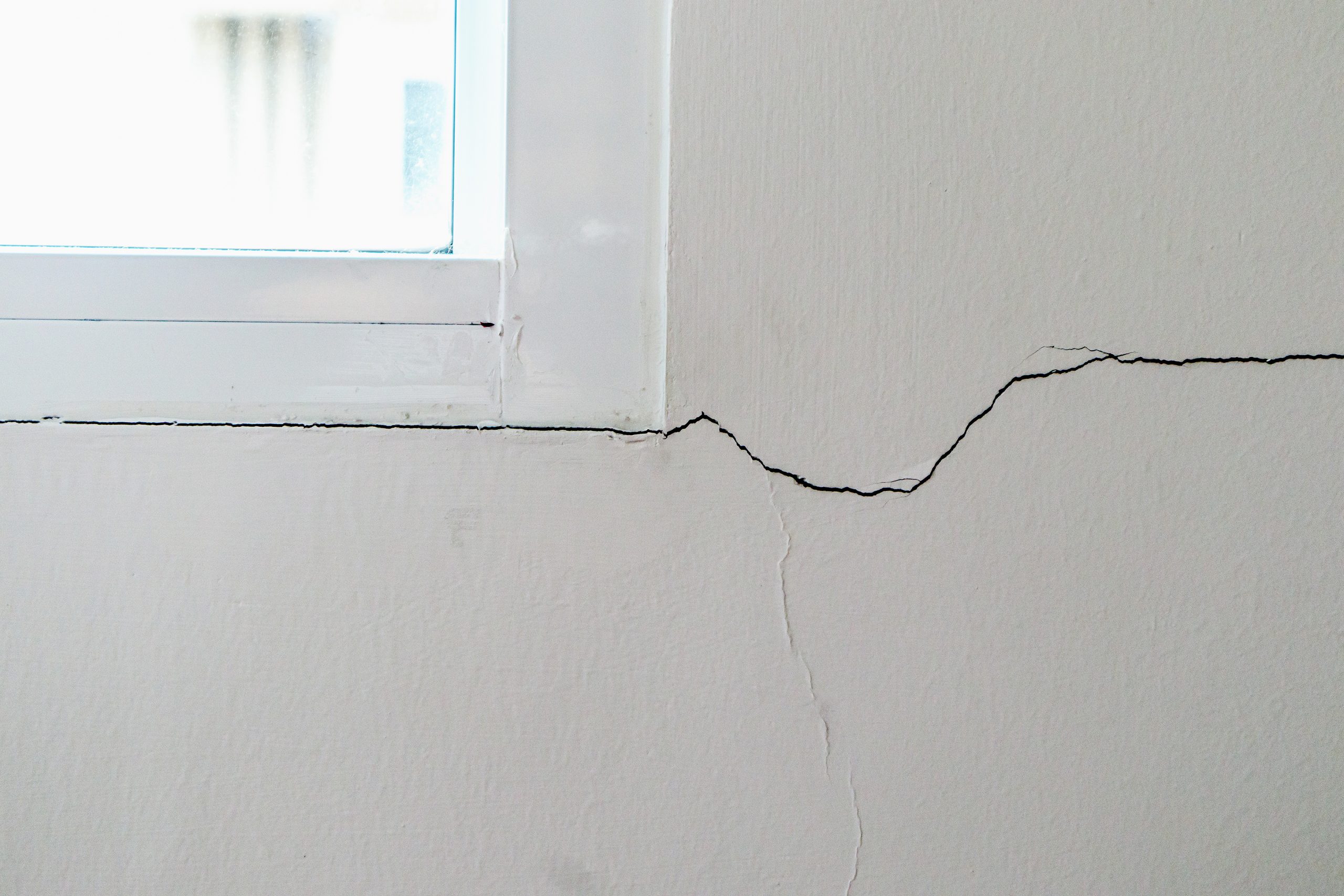Blog
How to Repair Structural Cracks in Walls

Most houses and properties in the UK have cracks in the walls. There are a number of different types of cracks that are classified by the BRE Digest 251 Assessment of Cracks in Houses, ranging from hairline cracks to those that need structural repair. The type and severity of the crack will determine the course of action that needs to be taken to resolve the issue.
Types of Cracks
Before treatment can begin, you first need to establish the type of crack you’re dealing with. A lot of people assume that all cracks indicate structural damage to a property, but this isn’t the case. There are lots of different types of cracks as detailed below.
Level 0 – a level 0 crack refers to a hairline crack that is up to 0.1mm thick. These are nothing to worry about and are completely normal. They require no treatment.
Level 1 – a level 1 crack is a crack up to 1mm wide. This can include settlement cracks which are typically no bigger than 0.5mm wide. Level 1 cracks can be easily remedied with basic decoration and are not considered structural cracks.
Level 2 – a crack up to 5mm wide is a level 2 crack and isn’t considered structural. It can be easily filled, although it could require some adjustments being made to the doors and the windows as they may begin to stick. If on external walls, level 2 cracks could require repointing to ensure they are weatherproof, and damp and moisture don’t creep into the home.
Level 3 – level 3 cracks can be serious, to a degree, and may require more attention, although they may not be considered structural. Like level 2 cracks, doors and windows might stick, but you may also notice fractures in service pipes and a lack of weather-tightness in external walls. Generally speaking, level 3 cracks are between 5mm and 15mm wide.
Level 4 – a level 4 crack up to 25mm wide could be considered structural damage, with areas of the wall needing replacements in most cases. Signs of level 4 cracks include sloping floors, bulging or leaning walls, fractured pipes, distorted window/door frames, and a loss of bearing in beams.
Level 5 – level 5 cracks are the most serious and relate to major structural issues. Large sections of wall may need completely replacing and re-building. The property may become unstable, with broken windows and doors and distorted walls. Level 5 cracks are 25mm and over in width.
Monitoring Cracks
It’s incredibly important to keep an eye on cracks of all descriptions, including lower-level ones. By monitoring the cracks you can ensure that if the situation changes, you’re on top of it and able to remedy it in good time.
Can Structural Damage be Repaired?
Whilst it’s relatively easy to solve cracks rated from level 0 to level 3, level 4 and specifically level 5 can be much harder to treat. When a house has structural damage, major work needs to be undertaken in order to solve the issue. It can be a big job, but it’s important to remember that structural damage can be repaired, although it may require entire sections of your property to be rebuilt.
You will need to enlist the help of professionals for structural cracks. Knowing how to repair structural cracks in walls isn’t easy and a lot can go wrong if it’s not dealt with properly the first time. It’s a good idea to hire a professional surveyor to identify the true cause of any crack over 5mm wide. Additionally, if you notice cracks appearing at a fast rate, this should also be investigated.
What Causes Structural Cracks in Walls?
There are a number of reasons for structural cracks to appear, with one of the most common ones being subsidence. This happens when the ground beneath a property sinks or shrinks. It’s more common in the south of England where the soil is comprised of clay because, when the weather gets warm, the soil can shrink. Houses built near mining areas can also be susceptible to subsidence. This causes the property to move, resulting in structural damage to the property.
Another cause of structural cracks is a failure within certain elements integral to the house build. This is more common with newer properties where the build may have been done quickly or by cutting corners, resulting in an incorrect build.
Moisture and damp can also cause structural cracks. This is common in areas with adverse weather conditions, e.g. in areas where driving rain is common or where there is a lot of sitting groundwater. Leaks can also cause significant structural damage if left untreated. It’s important to keep on top of your guttering, monitor your roof condition and keep an eye out for small external cracks that could let moisture in. Basement tanking is recommended for those with basements or levels below ground. This will keep water away from the walls and reduce the risk of damp or related structural damage.
How Garratt’s Damp & Timber Can Help
The Garratt’s Damp & Timber team are experts in basement tanking which could greatly reduce your risk of damp-induced structural cracks and damage. To book a site survey and get a no-obligation quote, please contact us. We work across London and the south east.
Archived Articles
Recent
-
18 Mar 2024
How to Get Rid of Damp in Bedrooms
While it may seem more logical that kitchens and bathrooms are more prone to damp, it may be surprising for…
-
13 Nov 2023
Benefits of Tanking Your Basement
While basements have been a staple of home construction in multiple countries, they are still a relatively new concept in…
-
13 Nov 2023
Taking Action on Fixing Damp
Damp is a widespread problem in properties across the UK; however, this doesn’t stop the fact that it’s a serious…







